From Steve Redick:
February 12, 1971 4-11 at 15th & Karlov
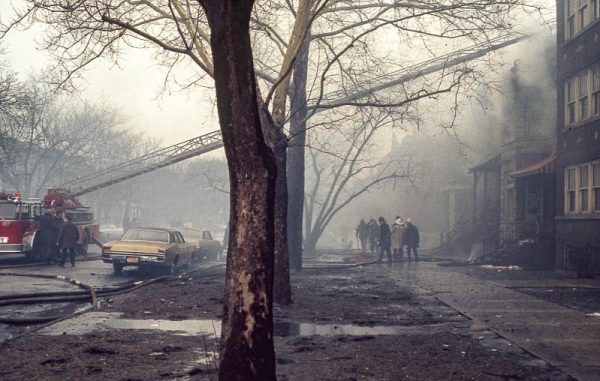
photographer unknown
Dec 30
Posted by Admin in Fire Department History, Historic Fire Photo | Comments off
From Steve Redick:
February 12, 1971 4-11 at 15th & Karlov

photographer unknown
Tags: Chicago Fire Department history, historic fire scene photos, Vintage 4-11 Alarm fire in Chicago 2-12-71, vintage fire scene in Chicago
This from Michael Christensen:
Historic photo Halloween 1961 Truck52 Engine 65

Historic photo Halloween 1961 – Chicago FD Truck 52 Engine 65
Tags: Chicago Fire Department history, video of vintage Chicago fire apparatus
Oct 23
Posted by Admin in Fire Department History, Fire Scene photos, Historic Fire Photo | Comments off
From Steve Redick:
July 1970, location unknown
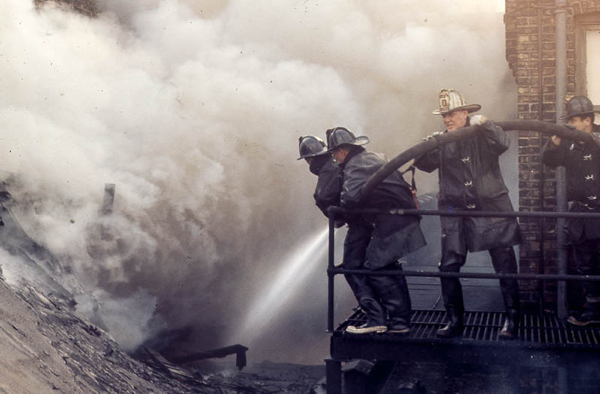
photographer unknown
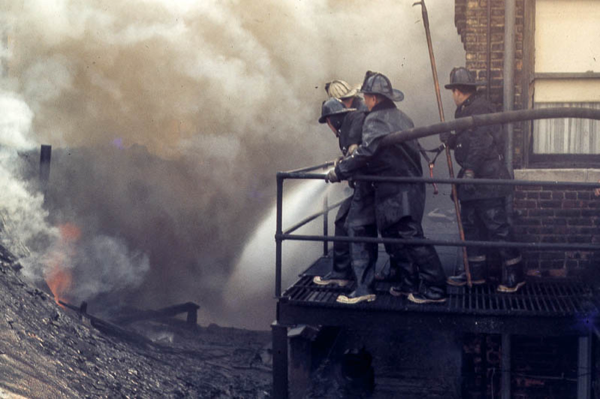
photographer unknown
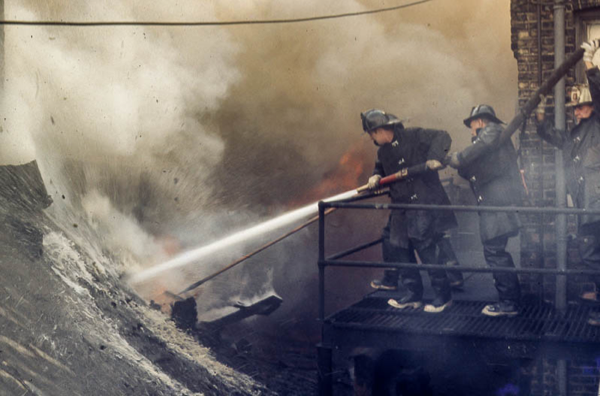
photographer unknown
Tags: Chicago Fire Department history, vintage photo of Chicago Firefighters battling a fire in 1970
Sep 27
Posted by Admin in Fire Department History | 4 Comments
From Phil Stenholm:
Another installment about History of Evanston Fire Department
Tags: Baha’i Temple fire in 1931, Becker Box Company factory fire, Chicago Fire Department history, chicagoareafire.com, Chicagoareafire.com/blog, Evanston FD Assistant Chief Ed Johnson, Evanston FD Fireman Milton Jasper, Evanston Fire Department history, History of Evanston Fire Department, Motorola Police Cruiser radio, Phil Stenholm
Sep 27
Posted by Admin in Fire Department History, Fire Truck photos | 7 Comments
Timbo, Arkansas Fire DepartmentX-Chicago Engine 45 D-494X-Langley, Arkansas1985 Federal E-One 1250/500E-1-4270

Tags: 1985 Federal E-ONE fire engine formerly owned by Chicago, 1985 Federal Motors - E-ONE fire engine, Chicago Fire Department history, new home for former Chicago fire engine, Ryan Smith, Timbo Arkansas Fire Department
Sep 22
Posted by Admin in Fire Department History | 3 Comments
From Phil Stenholm:
Another installment about History of Evanston Fire Department
THE GREAT DEPRESSION
In 1930, the civil service positions of Engineer and Assistant Engineer were consolidated with the position of Fireman I, although any firefighter driving a truck or working as a tillerman had to pass a test and be certified as a driver, and any firefighter working as a motor driver on an engine company had to pass a test and be certified both as a driver and as a pump operator.
Three veteran firemen – Frank Altenberg, Max Kraatz, and William Richards — were certified as steam pump engineers, and they were the only members of the EFD who were allowed to maintain, repair, and operate the tractorized-steamer kept in reserve at Station # 4. Among Evanston firemen who were not officers, only the two fire equipment mechanics – J. K. “Karl” Wilen and Norman “Foxy” Fochs, who were assigned as motor drivers on opposite platoons of Engine Co. 5 — remained separate and distinct (and more highly-paid).
From 1928 through 1932, the aggregate maximum daily shift staffing for EFD companies was 41, with an aggregate minimum daily shift staffing of 34 if each company was running one-man short. Firefighters were allowed two weeks’ paid vacation each year, but vacations were not permitted from November to March.Other than the annual two-weeks paid vacation, firemen were not paid for hours not worked, and that included absences due to illness, jury duty, a death in the family, even a temporary disability resulting from an injury incurred in the line of duty. If the absence of a company member caused the company to run more than one man short on a particular shift, one of the men assigned to the opposite platoon of that company would be required to remain on duty and work his day off, and then he would receive a “comp day off” at a later time, to be determined by the company officer when the company was back at full-strength.
Annual EFD salaries ranged from $4,800 (Chief Fire Marshal) to $3,300 (1st Assistant Chief Fire Marshal) to $3,000 (2nd Assistant Chief Fire Marshal) to $2,880 (Captain) to $2,700 (Lieutenant) to $2,640 (Fire Equipment Mechanic) to $2,400 (Fireman I) to $2,280 (Fireman II) to $1,920 (Fireman III).
However, as the “Great Depression” tightened its grip on the country, City of Evanston employees went unpaid over the last two weeks of December 1932. The mayor ordered staffing and pay cuts in all city departments effective January 1, 1933, and as a result, six positions were “axed” from the EFD at that time.
Because only three of the six positions could be eliminated through attrition — 1st Assistant Chief Ed Johnson (a platoon commander and the company officer of Truck Co. 1) suffered a fatal heart attack at the end of shift on October 22nd, and Capt, George Hargreaves (company officer of Engine Co. 1) and Fireman George Gushwa retired on December 31st — the three firemen with the least seniority (Philip Line, Lincoln Dickinson, and John Kabel) were laid-off. All three men returned to the EFD within two or three years, however, after Capt. Pat Gaynor (Engine Co. 4) retired in 1934 and firemen John Gaynor, John Tesnow, and Henry Thoms retired in 1936. For John Kabel, the last three months of 1932 was an especially painful time. Besides losing his job, he also suffered a gunshot wound while duck hunting in October!
At the time that they retired, George Hargreaves and George Gushwa were the longest-serving members of the Evanston Fire Department, with Hargreaves having set the all-time record for longest tenure with the EFD up until that point in time with 38 years of service, a mark that would not be exceeded until the 1940’s. Hargreaves joined the EFD in 1894, was promoted to lieutenant in 1902, and then to captain in 1903, while Gushwa joined the EFD in 1901.
The staffing cuts of January 1, 1933, caused Engine Co. 1, Truck Co. 2, and Engine Co. 2 to be reduced by one man each shift, resulting in a new maximum daily aggregate shift staffing of 38 if no firemen were absent. The minimum daily aggregate shift staffing permitted was dropped from 34 to 31, which could happen only if all seven companies were running one man short. Engine Co. 5 and Truck Co. 1 – the companies first-due to downtown Evanston’s high-value district –- still required a five-man minimum staffing each shift, but the other five companies now required a minimum staffing of only four-men per shift. Shift staffing would not return to the pre-1933 level ever again.
Salaries were cut by 7.5% in 1933, with an even greater reduction the following year, for a total cut covering both years of 20 – 25%! 1934 annual EFD salaries ranged from $3,900 (Chief Fire Marshal) to $2,553.60 (Assistant Chief Fire Marshal) to $2,228.64 (Captain) to $2,089.44 (Lieutenant) to $1,920 (Fireman). EFD salaries began to increase slightly in 1937, but pre-Depression salaries would not be seen again until 1944. Meanwhile, Evanston’s population in 1933 stood at 61,754, up more than 40% over the city’s population in 1923.
In addition to the cuts in the Evanston Fire Department on January 1, 1933, the Chicago Fire Insurance Patrol closed two of its eight firehouses on that same date. Included in the CFIP’s cuts was Patrol No. 8, located at 3921 N. Ravenswood Avenue. Since being placed into service in 1922, Patrol No. 8 had responded to fires in Evanston’s downtown “high-value district,” the Main Street and Central Street business districts, the Northwestern University campus, hospitals, schools, hotels, apartment buildings, factories, and high-value residential properties.
Patrol No. 8 was located six miles from Evanston’s downtown high-value district and could arrive anywhere in Evanston within 15 minutes of being dispatched from its quarters on Ravenswood Avenue, but with the closing of Patrol No. 8’s house, the nearest CFIP firehouse was now ten miles away. So for that reason, along with the City of Evanston’s budget cuts taking effect on January 1, 1933, Evanston’s contract with the Chicago Fire Insurance Patrol was terminated effective on New Year’s Day.
Tags: Chicago Fire Department history, chicagoareafire.com, Chicagoareafire.com/blog, Evanston FD Captain George Hargreaves, Evanston Fire Department history, History of Evanston Fire Department, Phil Stenholm
From Steve Redick:
I came into something really special. These photos are dated April 19, 1961 near the old fire academy. They are testing the feasibility of putting a second turret on the Snorkel basket, and it’s my dad in the basket! (wearing glasses) He was assigned to Snorkel 2 at the time and I remember him talking about how the 2-gun Snorkel (snorkel 5) never really worked well as they could not properly supply both turrets. Dad was only 33 years old at the time of the photo. Many thanks to my friend who found these photos.
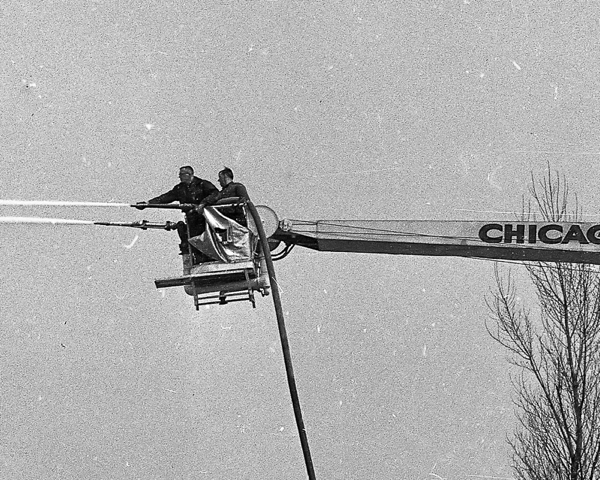
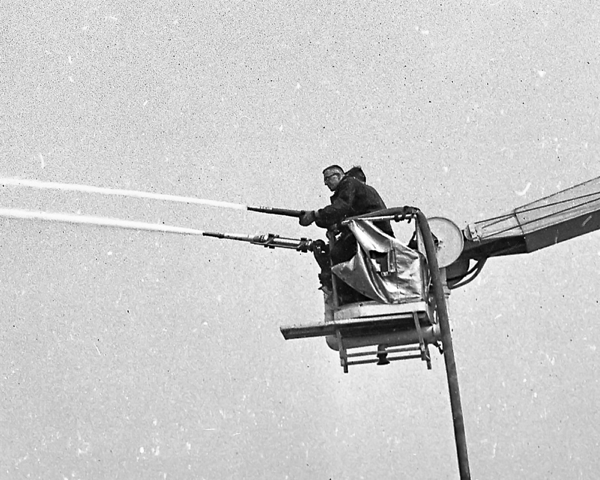
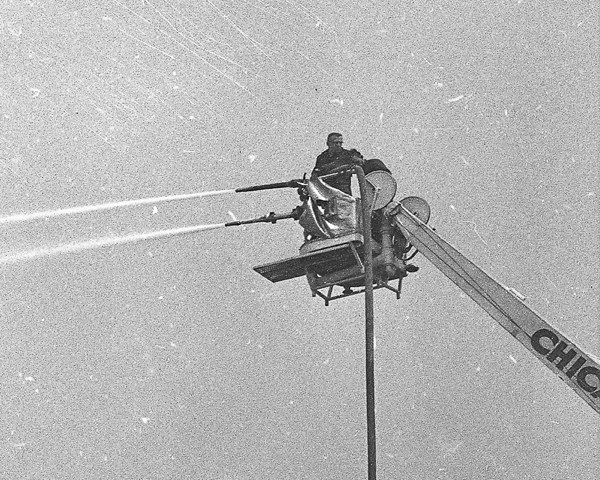
Tags: 1961 of Chicago FD Sni=orkel 2 testing a second gun in the basket, Chicago FD Snorkel 2, Chicago Fire Department history, historic photos of Chicago FD Snorkel 2, Vintage photo from April 19, Warren Redick
This from Dennis McGuire, Jr:
Found this article about Chicago Engine 92 being organized along with Engine 73’s new firehouse. The article is from 1927.
Tags: Chicago FD Engine 73, Chicago FD Engine 92, Chicago Fire Department history, Vintage news clipping about the Chicago Fire Department
Aug 13
Posted by Admin in Collectors of fire memorabilia | Comments off
From Fire Replicas:
Chicago’s Autocar Squad 2 is down to 20 units!
Tags: Chicago FD Autocar squad replica model, Chicago Fire Department history, chicagoareafire.com, Chicagoareafire.com/blog, Fire Replicas, Fire Replicas model of a Chicago FD 1952 Autocar Squad 2
Aug 11
Posted by Admin in Fire Department News, Reader submission | 1 Comment
From Steve Redick:
Engine 66, Squad 7. SS3 was organized in this house at a later time
Tags: Chicago Fire Department history, classic radio broadcast with the Chicago Fire Department, classic radio show featuring Chicago Fire Department history

For the finest department portraits and composites contact Tim Olk or Larry Shapiro.
Arclite theme by digitalnature | powered by WordPress